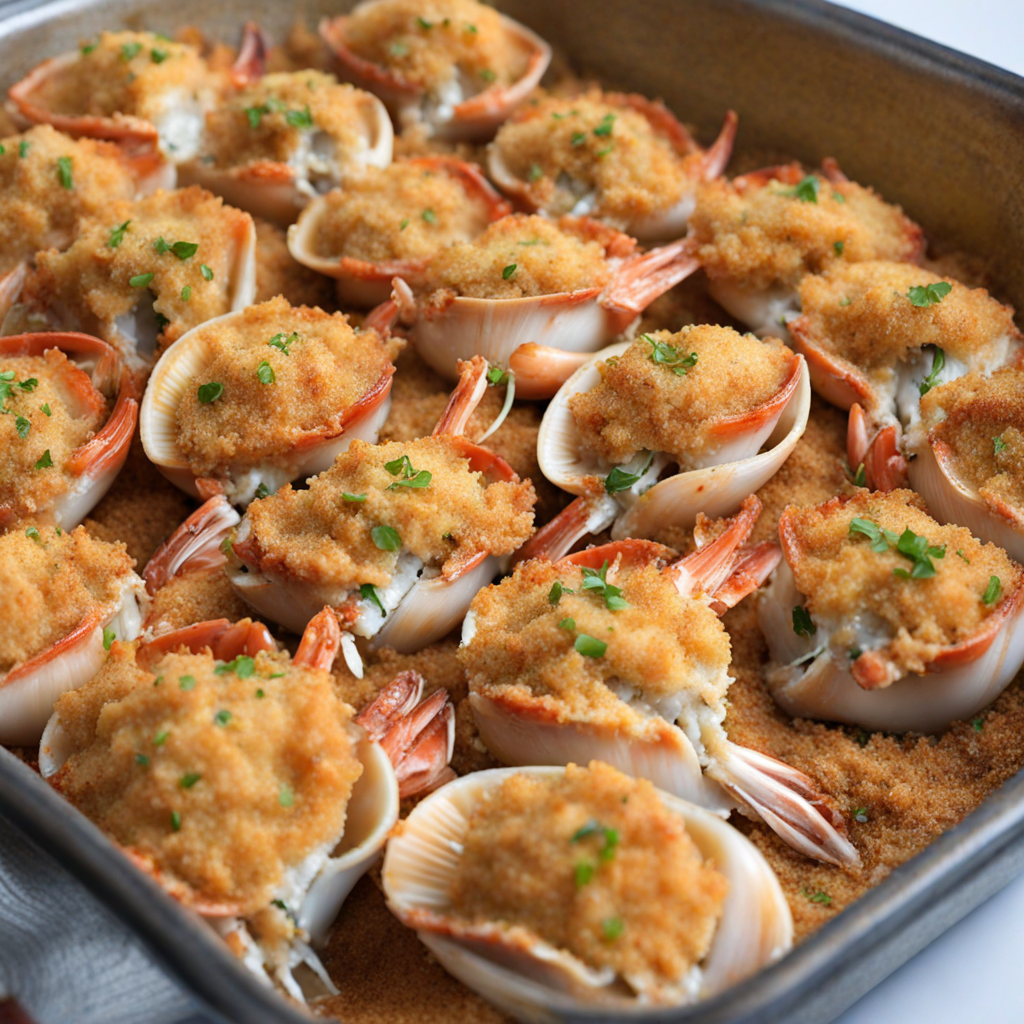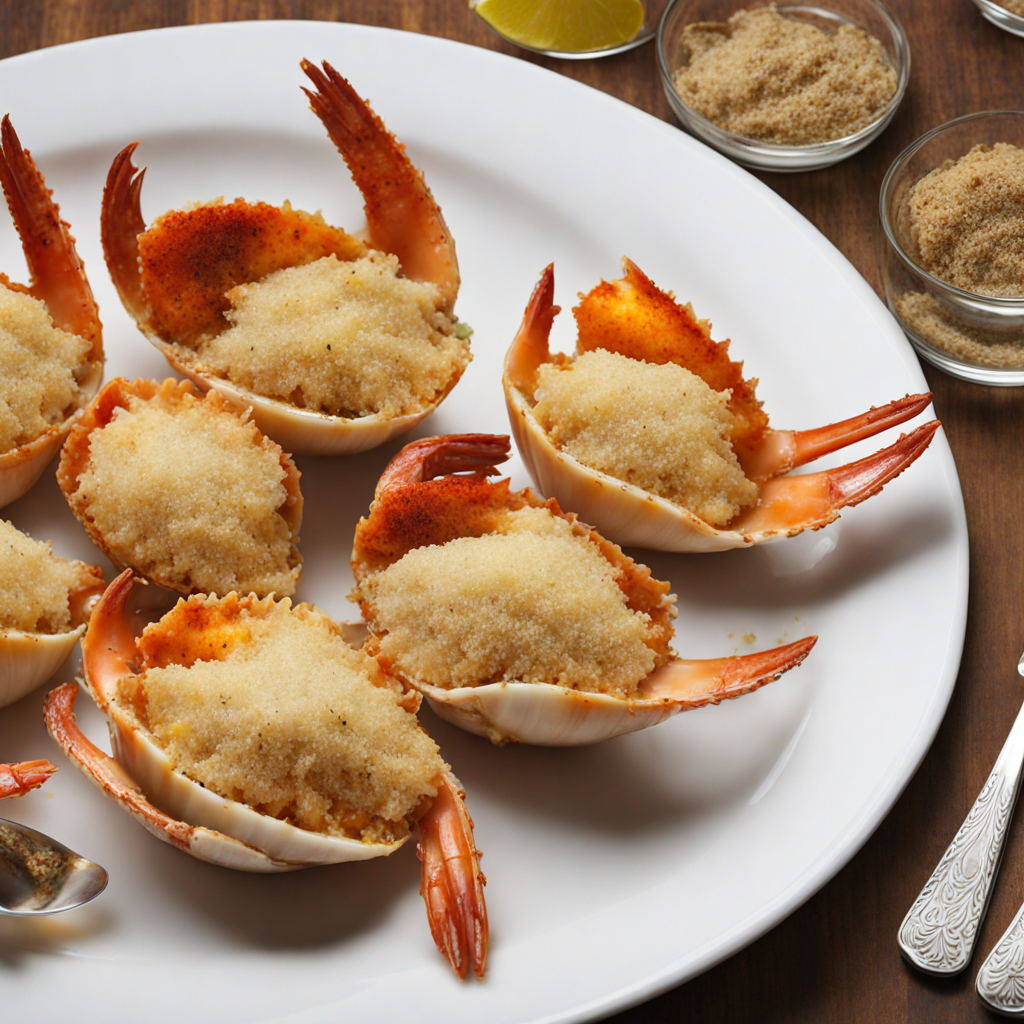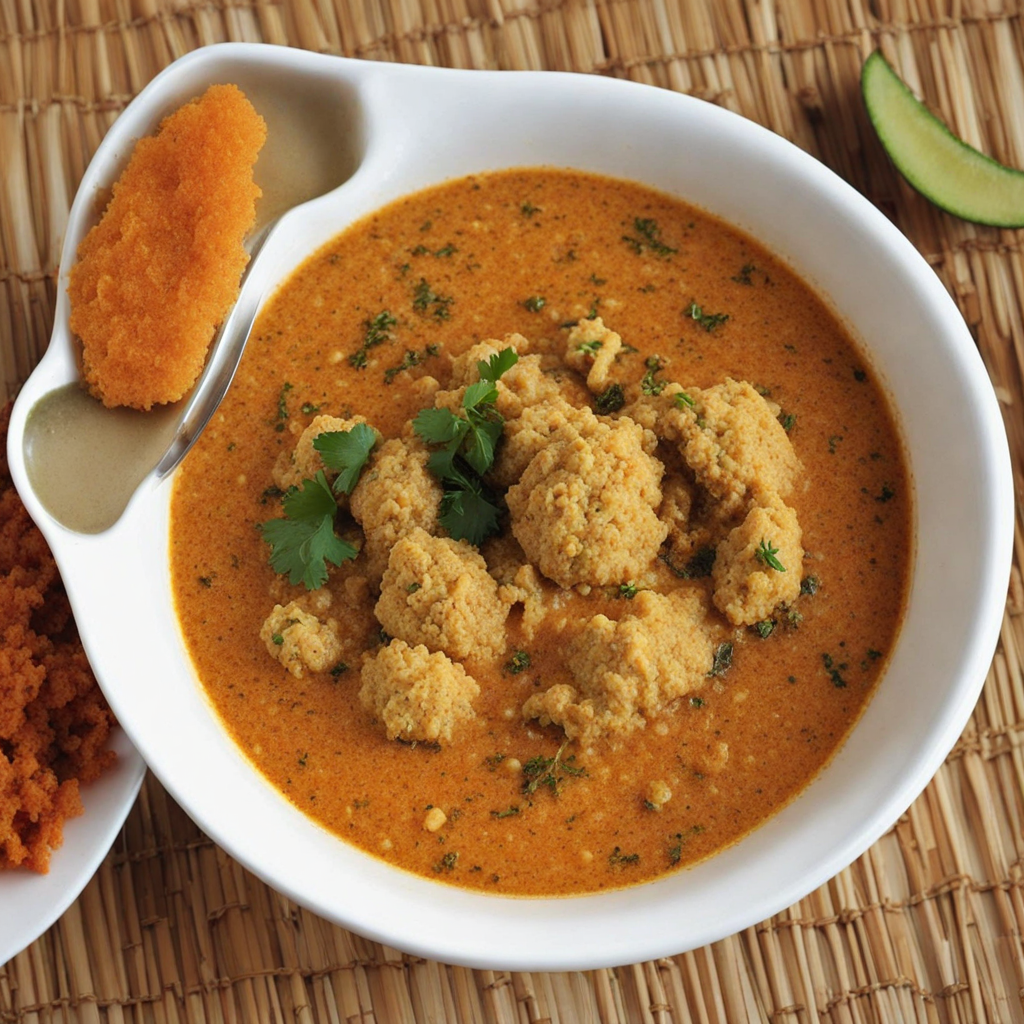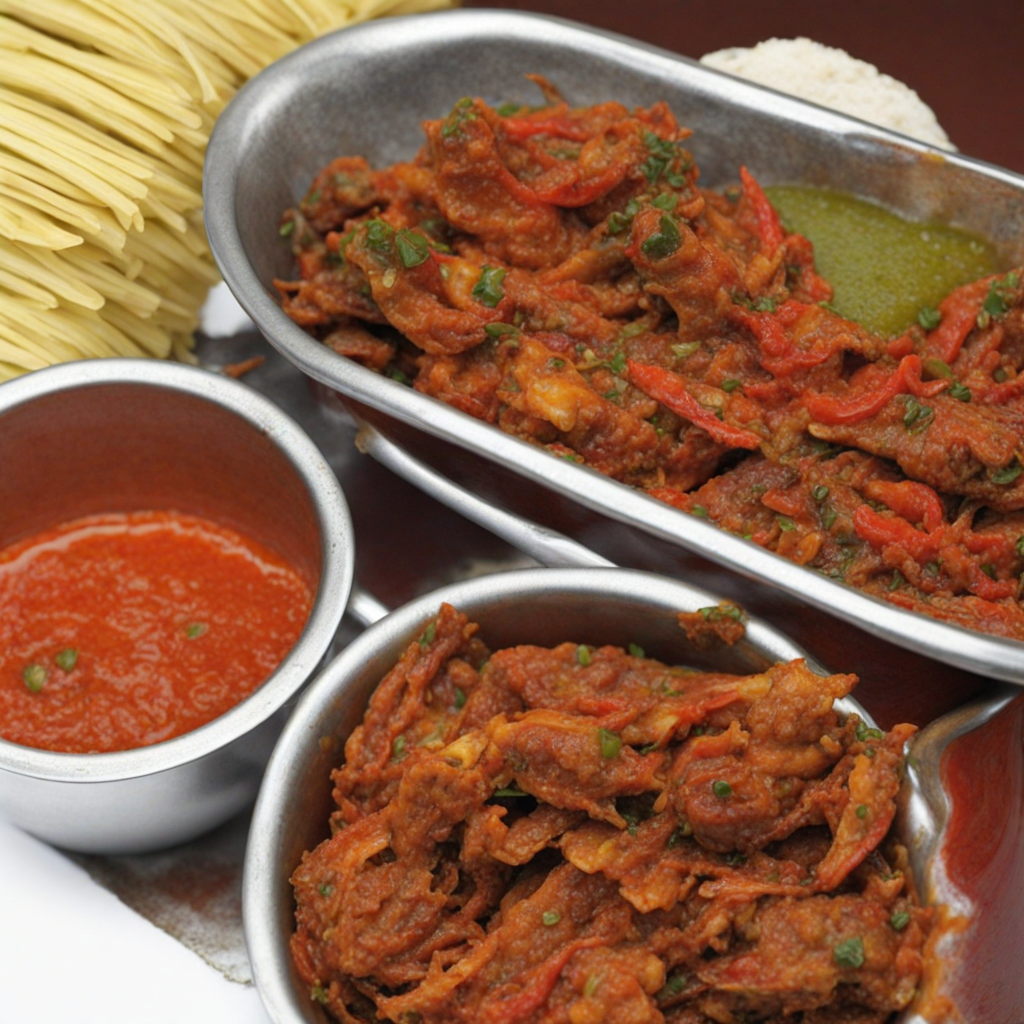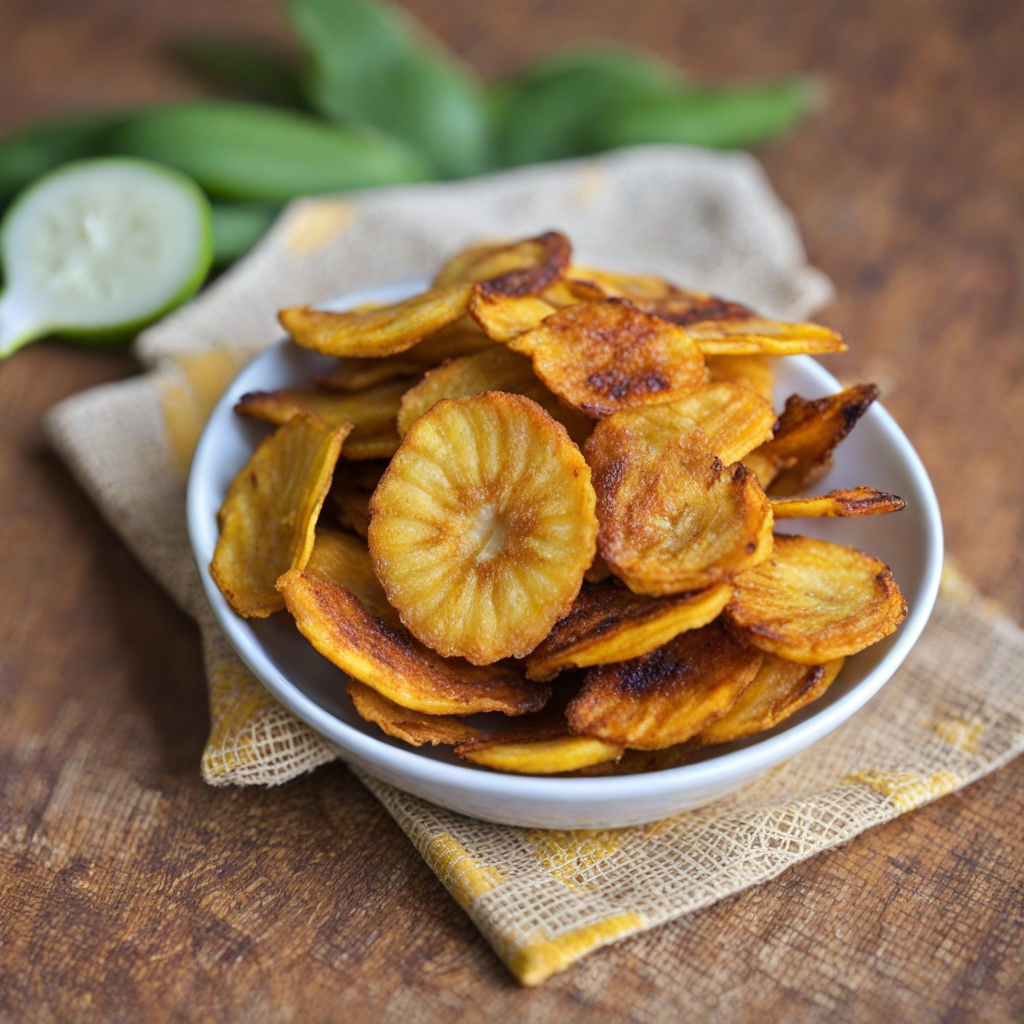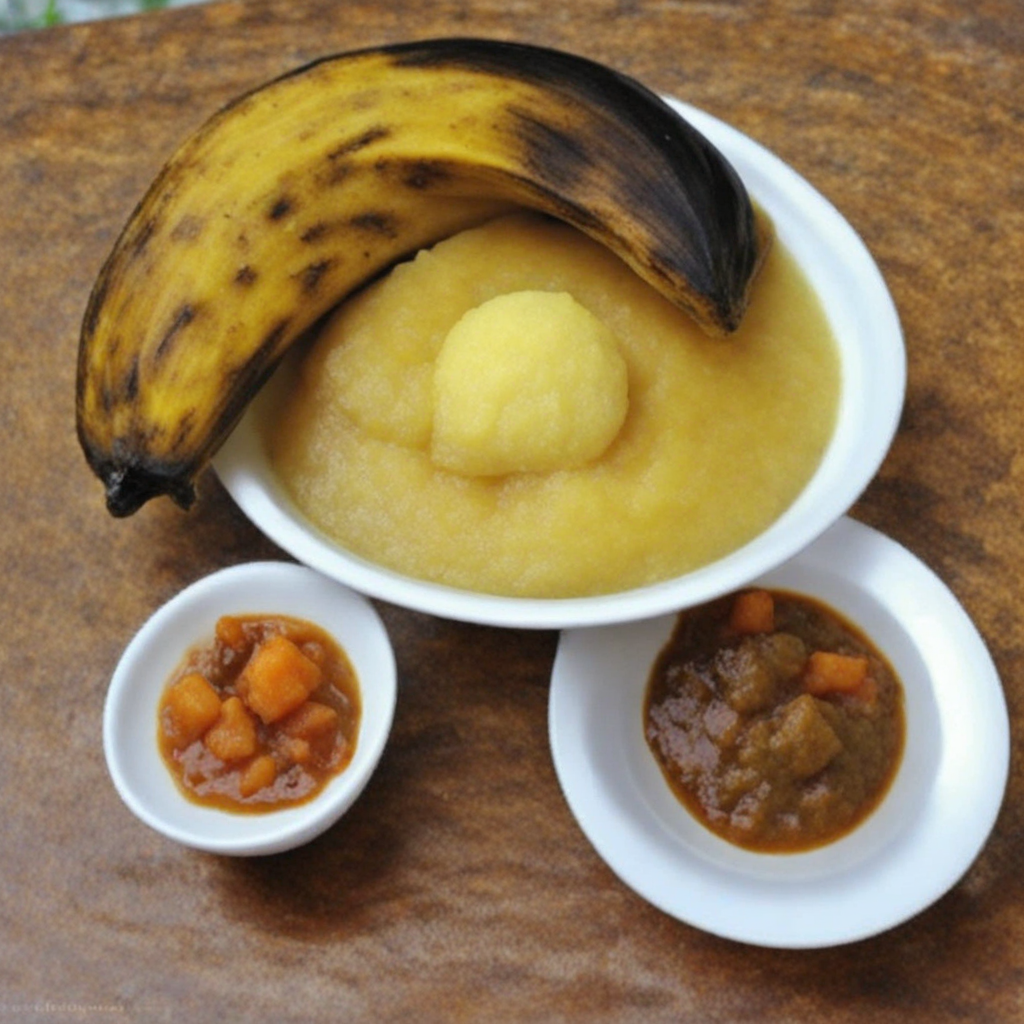Stuffed Crab Shells
Stuffed Crab Shells is a delightful Ghanaian dish that combines the rich flavors of the ocean with the vibrant spices of West Africa. The dish typically features fresh crab meat, which is meticulously removed from the shell and then mixed with an array of ingredients such as sautéed onions, garlic, and a medley of spices like ginger and chili pepper. This harmonious blend creates a filling that is both savory and aromatic, encapsulating the essence of Ghanaian cuisine. The natural sweetness of the crab meat shines through, complemented by the warmth of the spices, making each bite a tantalizing experience. The crab meat mixture is then carefully packed back into the crab shells, creating a visually appealing presentation that is as inviting as it is delicious. The stuffed shells are often topped with breadcrumbs or a sprinkle of grated cheese, which adds a crunchy texture and a hint of creaminess when baked. The shells are then placed in the oven until they are golden and bubbly, allowing the flavors to meld together beautifully. This cooking method enhances the natural umami of the crab while providing a satisfying contrast between the tender filling and the crispy exterior. Served hot, Stuffed Crab Shells are often accompanied by a side of spicy tomato sauce or a fresh salad, adding a refreshing counterpart to the richness of the dish. This culinary creation is not just a meal; it is a celebration of Ghana's coastal bounty and culinary heritage, making it a perfect dish for gatherings or special occasions. As you explore this unique taste, you'll discover the warmth of Ghanaian hospitality and the vibrant flavors that make it a truly unforgettable dish.
How It Became This Dish
The History of Stuffed Crab Shells in Ghana #### Origins Stuffed Crab Shells, known locally as "Crab Kelewele," is a traditional Ghanaian dish that embodies the rich culinary heritage of the coastal regions of Ghana. The crabs, primarily harvested from the warm waters of the Atlantic Ocean, particularly around the coastal towns like Elmina and Cape Coast, have long been a staple in the diets of the people living in these areas. The practice of stuffing crab shells likely originated from the necessity of utilizing local ingredients to create a filling and nutritious meal, reflecting Ghana’s resourcefulness in cooking. The use of crabs in Ghanaian cuisine can be traced back centuries, influenced by the interactions of various ethnic groups along the coast, including the Akan, Ewe, and Fante. The dish has evolved over time, with each community adding its unique spin, making the stuffed crab shells a versatile and beloved item in Ghanaian gastronomy. #### Cultural Significance Stuffed Crab Shells hold a significant place in Ghanaian culture, particularly in festive occasions and communal gatherings. Traditionally, crabs were often associated with abundance, and their preparation was a communal activity that brought families together. The dish is usually made during celebrations, such as weddings, funerals, and festivals, where the gathering of family and friends is paramount. In Ghana's coastal communities, fishing and crab-catching are vital livelihoods. The act of preparing stuffed crab shells not only showcases the culinary skills passed down through generations but also reflects the deep connection these communities have with the sea. The dish serves as a reminder of the importance of sustainable fishing practices and the need to respect the ocean’s resources, which are central to the livelihoods of many Ghanaian families. Moreover, stuffed crab shells represent a fusion of flavors and techniques that highlight the diversity of Ghanaian cuisine. The stuffing typically includes a mixture of breadcrumbs, spices, and sometimes vegetables like onions, peppers, and tomatoes, showcasing the vibrant flavors of the country's culinary palette. This blend of ingredients mirrors the cultural intermingling that has occurred over centuries, influenced by indigenous practices as well as the introduction of foreign elements through trade and colonization. #### Development Over Time As Ghana progressed through the colonial era and into independence in 1957, the culinary landscape began to shift. The introduction of Western cooking methods and ingredients altered traditional practices, but dishes like stuffed crab shells remained a cherished part of the diet. In urban areas, where people began to adopt faster-paced lifestyles, stuffed crab shells were adapted to fit modern needs. Restaurants and street vendors began offering ready-made versions, making it easier for people to enjoy this delicacy without the time-consuming preparation involved in traditional methods. The 21st century has seen a resurgence of interest in traditional Ghanaian foods, driven by a growing movement to celebrate and preserve indigenous culinary practices. Chefs and food enthusiasts are increasingly experimenting with stuffed crab shells, incorporating modern techniques and international flavors while respecting the dish’s roots. This evolution has resulted in gourmet versions of stuffed crab shells, featuring exotic ingredients like crab meat mixed with avocado, cream cheese, or even local spices like shito, a spicy pepper sauce that adds depth and heat. Furthermore, with the rise of social media and food blogging, dishes like stuffed crab shells have gained international attention. Ghanaian diaspora communities worldwide are sharing their culinary heritage, leading to a broader appreciation for Ghanaian cuisine. This global interest has encouraged chefs in Ghana to innovate further, experiment with the presentation of stuffed crab shells, and introduce them into upscale dining experiences, thus bridging the gap between tradition and modern gastronomy. #### Modern-Day Representation In contemporary Ghana, stuffed crab shells are often served as an appetizer or main course in restaurants, showcasing the blend of traditional and modern culinary techniques. The dish is frequently featured in food festivals, where local chefs compete to create the most innovative and delicious versions. This competitive spirit has led to the introduction of new ingredients and cooking methods, making stuffed crab shells a dynamic part of Ghana’s food scene. Moreover, the rise of eco-conscious dining has prompted chefs to source their crabs sustainably, promoting awareness of marine conservation issues. This aligns with the growing global trend of mindful eating, where consumers seek to understand the origins of their food and its environmental impact. As a result, stuffed crab shells are not only a celebration of Ghanaian culinary heritage but also a reflection of contemporary values that prioritize sustainability and ethical sourcing. #### Conclusion Stuffed Crab Shells represent more than just a dish in Ghana; they are a symbol of cultural identity, community bonding, and culinary evolution. From their origins in coastal fishing villages to their modern interpretations in upscale restaurants, these stuffed shells encapsulate the richness of Ghanaian heritage and the adaptability of its food culture. As the world continues to embrace diverse cuisines, stuffed crab shells stand as a testament to the enduring legacy of Ghanaian cooking and the importance of preserving traditional practices while embracing innovation. In every bite, one can taste the history, culture, and community that has shaped this beloved dish, making it an essential part of Ghana's gastronomic narrative.
You may like
Discover local flavors from Ghana


